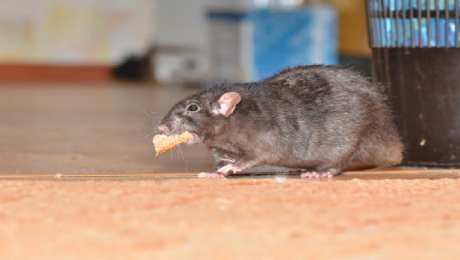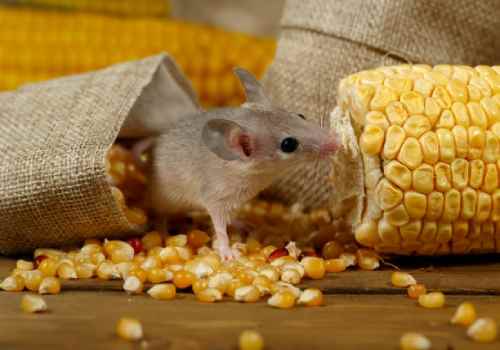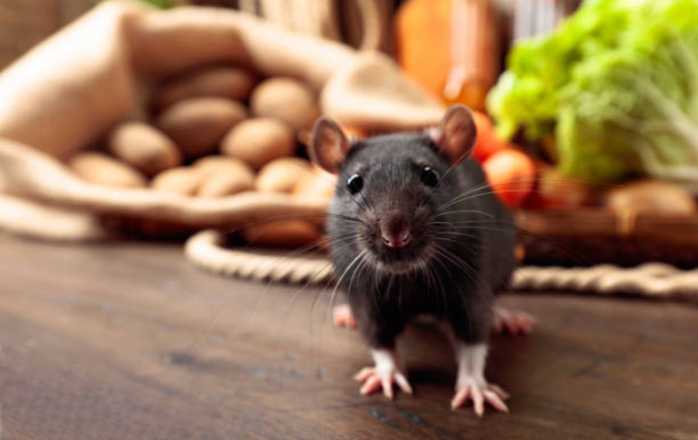First, homeowners can deny mice a food source. They should store pet food and bird seed in airtight containers, promptly wipe stovetop spills, and keep exterior trash cans sealed and emptied.
Mousetraps, such as classic snap traps, glue boards, and live traps can be effective. However, for major infestations it may be necessary to call in professional exterminators.
Getting Rid of Mice in the Walls

In a perfect world, you’d never hear the scritchy-scratchy sounds of mice scurrying through your walls. But that’s not the case, and when you do, it’s a sign that there may be an infestation of rodents in your home. Other signs include black, pellet-sized droppings, musty rodent odors, oily black marks on baseboards and walls, and chewed-through wires.
The quickest and most permanent solution is to structurally repair your home, which involves sealing all entrance points for mice. This is something that a pest specialist can help you do either pre-infestation or after your mouse problem has been addressed.
Natural deterrents, such as apple cider vinegar and hot pepper spray, can also be helpful for preventing mice from entering your home. These can be sprayed around all possible access points and should be re-applied regularly.
Getting Rid of Mice in the Floors
When mice invade your home or apartment, they seek out dark, hidden places like attics and crawl spaces. They also tend to nest in wall voids and other out-of-the-way spaces, leaving behind musty rodent odors, greasy smudges on walls and floorboards, and gnawed holes in the food packages of your pantry.
Figure out where the mice are entering from and seal these areas to keep them out. You can find a number of plant-based rodent repellents at your local hardware store that send these unwelcome guests scurrying. Also make sure you clean up crumbs and scraps, store food in sealed containers, and stow away woodpiles and compost piles. And, be sure to listen at night for signs of scurrying: squeaks and scratching noises.
Getting Rid of Mice in the Kitchen

Look for dark spots inside cabinets (for mouse droppings) and behind or beneath appliances, and check for gnaw marks on wires. Store food, pet food and grains in airtight containers that mice cannot chew through. Vacuum and sweep regularly to remove crumbs that can sustain a rodent population. Keep trash cans closed and clean, both indoors and out.
Outside, trim back shrubs and trees so they are not touching your house and remove piles of rocks or debris that mice could use to hide in. Seal narrow gaps with silicone caulk, and fill larger holes with steel wool or a commercial product such as foam insulation pest blockers. Also, install door sweeps to éliminer rat from scurrying underneath doors. Check garages and basements for harborage areas, and make sure cars are not under them where mice may be living in the engine.
Getting Rid of Mice in the Bathroom
Typically, once mice settle in your house they start laying down a trail of urine and pheromones that attract other rodents. Other telltale signs include droppings, scurrying sounds and shredded paper supplies that they use to make their nests. Mice also hug walls and baseboards, leaving behind a grease trail that looks like smudged handprints on painted surfaces.
To keep mice away, nix the food sources that they thrive on. This means no more food on counters, crumbs under tables and a no-sharing policy for pet bowls. Peppermint and clove oil are also said to repel mice, so saturate cotton balls with these scents and place them in problem areas. Then, seal up entry points to your home with wire mesh, steel wool and caulk.
Getting Rid of Mice in the Basement
If you’ve noticed signs of mice in your house, like scurrying noises in the walls or greasy smudges on wall and floorboards, or if your dog or cat starts sniffing suspiciously at squeaks in the ceiling, you can try to trap them yourself before calling a pest control professional. For example, if you have access to the crawl space under your house, place an on/off light in there, as mice are less likely to be active in bright light.
Summary:
Set snap traps with peanut butter bait near any areas where you think the mice might be entering and leaving. Also, caulk narrow gaps and stuff steel wool in rotten wood spots, then seal the holes with joint compound or foam insulation pest blockers. Lastly, keep the inside of your house clean and store food items in sealed containers.
